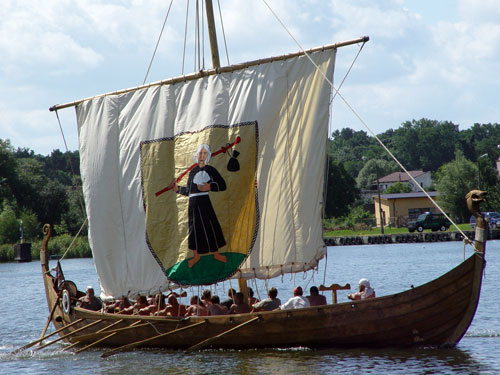By woodenboat.com.
An immersion in the folk wisdom of a thousand years
The night before our 70-mile open-water crossing from the Norwegian island of Sørværet to the Lofoten Islands, Gunvor Storaas, the 27-year-old skipper, checked the wind forecast on her phone. The next day, it was going to blow 40 knots from the south. The vessel in which we were sailing, a 42′ fembøring called SKÅRUNGEN, is of a type that represents the last evolution of a thousand-year Viking boat lineage. In the mid-1800s, thousands of these boats were used to fish cod in the Lofotens during the winter months before returning, their crews perhaps richer, to the Trondheim region in the spring.
Gunvor and the 20-year-old first mate, Gea Prytz, are Fosen alumnae. I had corresponded with Lena Börjesson, a teacher at the school, about her 30-year study and practice of traditional Viking-age navigation techniques, and when the opportunity came up for me to join this expedition last year, I leapt at it. With each day of sailing, I became more convinced of the seaworthiness of the fembøring.
With that 40 knots of wind on our stern, we sailed north the following morning. In the middle of the passage, with the promised winds blowing steadily, the waves were breaking turquoise, and we had reefed the sail to its smallest size. Before too much worry took hold in our minds, we saw the Lofoten Wall, the fortress-like mountain formation that heralds one’s arrival at the islands, rise up from the horizon. A crew member immediately pulled out her trumpet to celebrate our unspoken relief. We arrived in Stamsund, Lofoten, on May 4 to snowy, jagged peaks thrusting out of the steel gray ocean about nine hours after our departure.
Read more at woodenboat.com.

